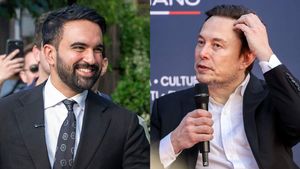In the current age of marriage equality and open military service, it has become all too easy to forget that the Stonewall riots were in fact a violent uprising against years of police brutality and harassment, led by gender-nonconforming activists of color. Despite attempts to rewrite the history, the fact remains that in the early years of the LGBT movement, police violence was arguably our most central concern, and LGBT people of color were often the ones on the front lines of the resistance.
Though much has changed, much has stayed the same.
Those hit hardest by police brutality are still LGBT people of color. According to data from 2014, transgender people of color were 6.2 times more likely to experience physical violence from police than their white, cisgender counterparts. LGBT people of color remain on the front lines of resistance as well. Two of the three founders of #BlackLivesMatter, for example, are queer women of color. Indeed, Black Lives Matter has transformed the narrative around police brutality to make central the ways in which intersecting identities and gender play a role in the dehumanization and devaluation of black lives.
Despite the long-standing leadership of queer and trans people of color and our shared history and current struggles, most national LGBT and racial justice organizations often have difficulty moving beyond single-issue silos. The prioritization of single-issue organizations over those that adopt broader frameworks has made it difficult to build strong alliances between our movements. Indeed, we need alliances now more than ever.
As with policing, the movement to dismantle the school-to-prison pipeline provides an opportunity to collaborate, and to do so in a way that builds alliances across race, sexuality, gender, and generation. This week, Advancement Project, the Equality Federation, and Gay-Straight Alliance Network came together to release Power in Partnerships: Building Connections at the Intersections to End the School-to-Prison Pipeline, a report we hope will help organizations take steps to build collaborative relationships that can increase our power.
In just over a decade, the school-to-prison pipeline has transformed from an unknown education issue into a national movement. Communities across the country have organized to advocate for commonsense discipline solutions that keep students in the classroom, and have drawn attention to stark racial disparities that make black students three times more likely to be suspended than their white counterparts. More recently, the movement has highlighted increased use of exclusionary discipline on LGBT and gender-nonconforming students, particularly LGBT students of color. Today, LGBT youth make up only 6 percent of the general population but represent 15 percent of people currently in juvenile detention.
We are in the midst of a school discipline crisis that is driving LGBT youth, youth of color, and especially LGBT youth of color out of schools and into the juvenile justice system. This crisis presents another important opportunity for us to break down the barriers between our movements and build on collaborative partnerships. Driven by our shared interest in the decriminalization of youth, we can work together to push back against the punitive policies that deny our youth the opportunity to succeed.
It is our hope that this report inspires our movements to take a step back and think more generally about who and what we are targeting in our work. When we do, it is likely that we will find that we often encounter the same discriminatory individuals, underresourced institutions, biased courts and policy-making bodies, broken systems, unfair social structures, and undereducated hearts and minds. The more we think of our work broadly as pushing back against these same targets and the more we realize our similarities, the easier it will be to close the gap between our movements.
Following the Stonewall riots, a variety of LGBT organizations emerged that emphasized the importance of racial justice and the power of a movement built on the shared interests of LGBT people and people of color to push back against police brutality. In 1970, the Gay Liberation Front and the Black Panther movement pledged support to each other, recognizing the value of their shared experiences with police brutality and harassment. As Huey P. Newton himself explained, "[the] gay liberation front are our friends, they are our potential allies, and we need as many allies as possible."
The LGBT movement and the movement for racial justice haven't always been divided. In order to dismantle the school-to-prison pipeline and create brighter futures for LGBT youth and youth of color, we need to look beyond the traditional boundaries of our organizations. Our young people need as many allies as possible.
THENA ROBINSON-MOCK is the project director for the Ending the Schoolhouse to Jailhouse Track Campaign at Advancement Project. IAN PALMQUIST is the director of leadership programs for Equality Federation.




































































Charlie Kirk DID say stoning gay people was the 'perfect law' — and these other heinous quotes